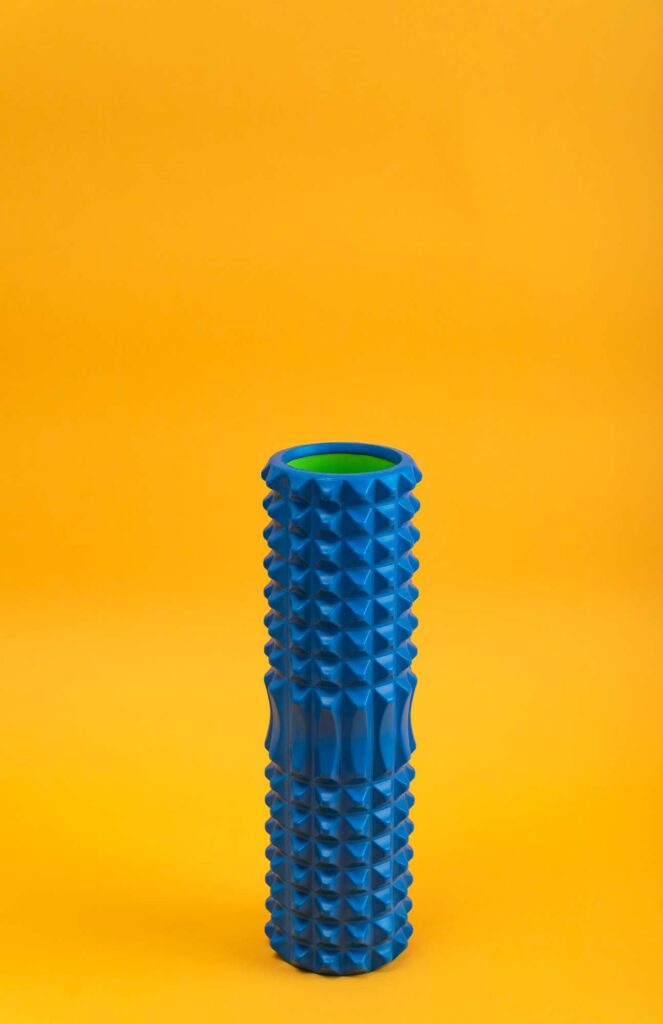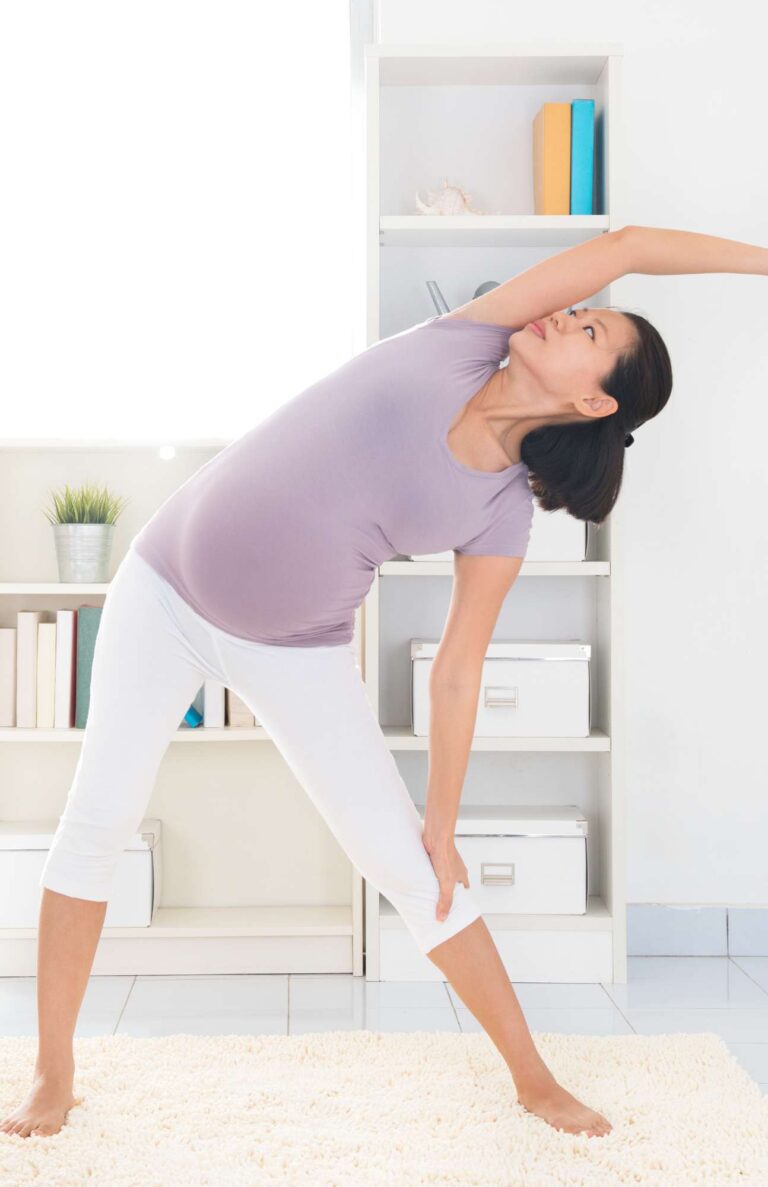The Ultimate Guide on How to Foam Roll for Knee Pain Relief
Last Updated on January 15, 2024 by Dr. Tiffany Egan
As someone who has experienced knee pain, I understand how debilitating it can be. Knee pain can limit your ability to do everyday activities and even prevent you from participating in your favorite sports or exercises. That’s why I want to share with you the ultimate guide on how to foam roll for knee pain relief.
Foam rolling has become increasingly popular in recent years as a way to alleviate muscle soreness and tightness. In this guide, I will explain what foam rolling is, the benefits of foam rolling, different foam rolling techniques for knee pain, and how to incorporate foam rolling into your knee pain management routine.
Table of Contents
What is Foam Rolling?
Foam rolling is a form of self-myofascial release (SMR) that uses a standard foam roller to apply pressure to specific areas of the body, specifically soft tissues. The foam roller is a cylindrical tool made of foam that can vary in density and size.
By using your body weight to apply pressure to the foam roller, you can help release tight muscles and knots in your fascia (the connective tissue that surrounds your muscles).
Foam rolling is often used as a form of warm-up before exercise or as a way to aid recovery after exercise. However, it can also be used as a way to alleviate muscle soreness and tightness, which can be especially helpful in cases of knee pain.

Understanding Knee Pain and its Causes
Before we dive into how foam rolling can help with knee pain, it’s important to understand what causes knee pain. Knee pain can be caused by a variety of factors, including injury, overuse, and arthritis.
The knee joint is made up of bones, cartilage, ligaments, and tendons, which can all be affected by these factors.
Injury to the knee can include ligament sprains or tears, meniscus tears, or patellar tendonitis. Overuse injuries can occur when the knee is subjected to repetitive stress, such as from running or jumping.
Certain related conditions such as sciatica can cause knee pain.
Arthritis can also cause chronic pain in the knee, particularly osteoarthritis, which is the breakdown of cartilage in the knee joint.
Ever wonder why does my knee hurt when it’s cold? There’s a correlation between colder weather and knee pain!
Knee pain can make everyday activities, such as sitting for long periods and driving, painful and uncomfortable. Here are some recommendations on how to quickly alleviate knee pain while driving.
Benefits of Foam Rolling for Knee Pain Relief
Foam rolling can be beneficial for knee pain relief in several ways. By applying pressure to tight muscles and fascia, foam rolling can help increase blood flow and oxygen to the affected area, which can aid in the healing process.
Foam rolling can also help increase range of motion and flexibility, which can make a significant difference in cases of knee pain.
In addition, foam rolling can help alleviate pain and soreness by reducing muscle tension and trigger points. Trigger points are areas of muscle that are tender to the touch and can cause referred pain or discomfort. Foam rolling can help release these trigger points and alleviate pain.
Now, let’s move on to how to foam roll for knee pain—>>>

How to foam roll for knee pain – Techniques
There are several foam rolling techniques that can be used for knee pain relief. The following are some of the most effective techniques for a particular muscle group:
Quadriceps Foam Roll
The quadriceps are the muscles located on the front of the thigh and are often tight in people with knee pain. To foam roll the quad muscles, start by lying face down on the floor with the foam roller placed under your thighs. Use your arms to lift your torso off the ground and slowly roll the foam roller up and down your thighs, focusing on any areas of tenderness or tightness.
IT Band Foam Roll
The Iliotibial band “IT band” is a thick band of connective tissue that runs from the outer hip down to the thigh and can be a common source of knee pain. To foam roll a tight IT band, lie on your side with the foam roller placed under your hip. Use your arms to lift your torso off the ground and slowly roll the foam roller down the outside of your thigh, stopping at any tight spots.
Hamstring Foam Roll
The hamstrings are the muscles located on the back of the thigh and are often tight in people with knee pain. To foam roll the hamstrings, start by sitting on the foam roller with your legs straight out in front of you. Use your arms to lift your hips off the ground and slowly roll the foam roller up and down the back of your thighs. Focus on any areas of tenderness or tightness with sustained pressure
Calf Foam Roll
The calf muscles are located on the back of the lower leg and can be a source of knee pain. To foam roll the calves, start by sitting on the floor with your legs straight out in front of you and the foam roller placed under your calves. Use your arms to lift your hips off the ground and slowly roll the foam roller up and down your calves, focusing on any areas of muscle tightness.
Tensor Fascia Latae Foam Roll
The TFL is a muscle located in the hip and thigh area that plays a vital role in maintaining proper alignment of your pelvis and stability of your hips. It also helps with movements such as walking, running, and climbing stairs. However, due to our modern sedentary lifestyles and lack of movement, this muscle can become tight and cause discomfort or pain in the lower back, hips, knees, or IT band.
How to foam roll for knee pain – Precautions and Safety
While foam rolling can be a safe and effective way to alleviate knee pain, there are some precautions and safety measures to keep in mind:
- Avoid foam rolling directly on the knee joint itself, as this can cause further irritation or injury.
- Start with a softer foam roller and gradually progress to a denser one as your body adapts.
- Avoid foam rolling if you have an acute injury or inflammation in the knee.
- If you experience pain or discomfort while foam rolling, stop immediately and consult with a healthcare professional.
Foam Roller Exercises for Different Types of Knee Pain
Now that you have a good idea on how to foam roll for knee pain, let’s move on to other related conditions. Foam rolling can be helpful for different types of knee pain. The following are some of the best exercises that can be useful for specific types of knee pain:
Patellar Tendonitis
Patellar tendonitis is a common overuse injury that causes pain in the front of the knee. Foam rolling the quadriceps can be a great way to help alleviate this pain, as tight quadriceps can put extra strain on the patellar tendon. In addition, foam rolling the IT band can also be helpful, as tightness in the IT band can cause tension on the patellar tendon.
Runner’s Knee
Runner’s knee is a term used to describe a variety of knee pain conditions that occur in runners. Foam rolling the quadriceps and IT band can be helpful in alleviating this pain, as both of these areas can become tight in runners.
Osteoarthritis
Osteoarthritis is a degenerative joint disease that can cause knee pain and stiffness. Foam rolling the entire lower body such as the quadriceps, IT band, and calves can be helpful in increasing range of motion and flexibility in the knee joint.

Incorporating Foam Rolling into Your Knee Pain Management Routine
Knowing how to foam roll for knee pain can be a helpful addition to your pain management routine. To incorporate foam rolling, start by choosing a foam roller that is appropriate for your level of experience and needs.
Begin with a few minutes of foam rolling before and after a simple exercise, focusing on any areas of tightness or tenderness. Gradually increase the amount of time you spend foam rolling as your body and muscle tissue adapts.
In addition, consider incorporating foam rolling into your daily routine. Foam rolling before bed can be a helpful way to alleviate sore muscles and tension before sleep. You can also foam roll in the morning to help wake up your muscles and prepare for the day ahead.
How to foam roll for knee pain – Tips and Exercises
In addition to figuring out how to foam roll for knee pain, there are several other exercises and tips that can be helpful. These include:
- Strengthening exercises for the muscles around the knee, such as the quadriceps and hamstrings.
- Low-impact exercises, such as swimming or cycling, that can help reduce stress on the knee joint.
- Using ice or heat therapy to alleviate pain and inflammation.
- Wearing supportive shoes that can help reduce impact on the knee joint. Foot conditions such as plantar fasciitis can cause knee pain too!
A Holistic Approach to Knee Pain Management
While foam rolling and other exercises can be helpful in alleviating knee pain, it’s helpful to know when to seek out a healthcare professional for further knee pain management.
A healthcare professional such as a physical therapist can help address any underlying issues that may be causing the pain, such as poor posture or muscle imbalances.
Physical therapy can help by keeping track of pain scores for you and explain one-on-one how to foam roll for knee pain. They can also help you find the best method to provide the most effective exercises for your specific condition.
For more serious or severe knee conditions, seeking out an orthopedic doctor or surgeon may be needed. Need to know when to see an orthopedic surgeon for knee pain.
It also includes taking care of your overall health, such as getting enough sleep, eating a healthy diet, and managing stress.

Conclusion
Knee pain can be a frustrating and debilitating condition. The good news is, you now know how to foam roll for knee pain! By incorporating foam rolling and other exercises into your knee pain management routine, you can help alleviate pain and increase range of motion and flexibility.
Remember, it’s a good idea to start slowly and listen to your body, and consult with a healthcare professional if you experience pain or discomfort. With patience and dedication, you can help alleviate your knee pain and get back to doing the activities you love.







2 Comments
Comments are closed.